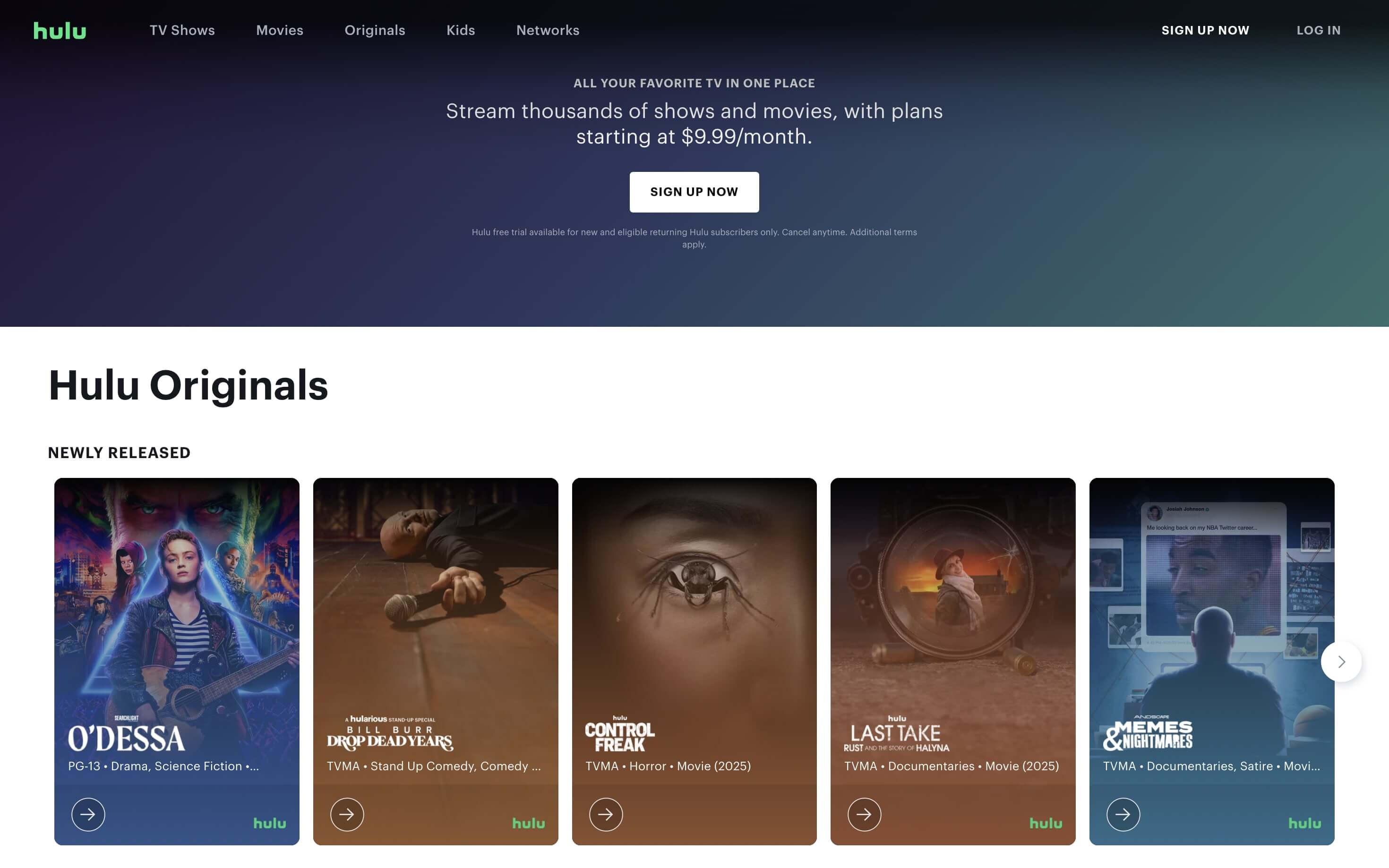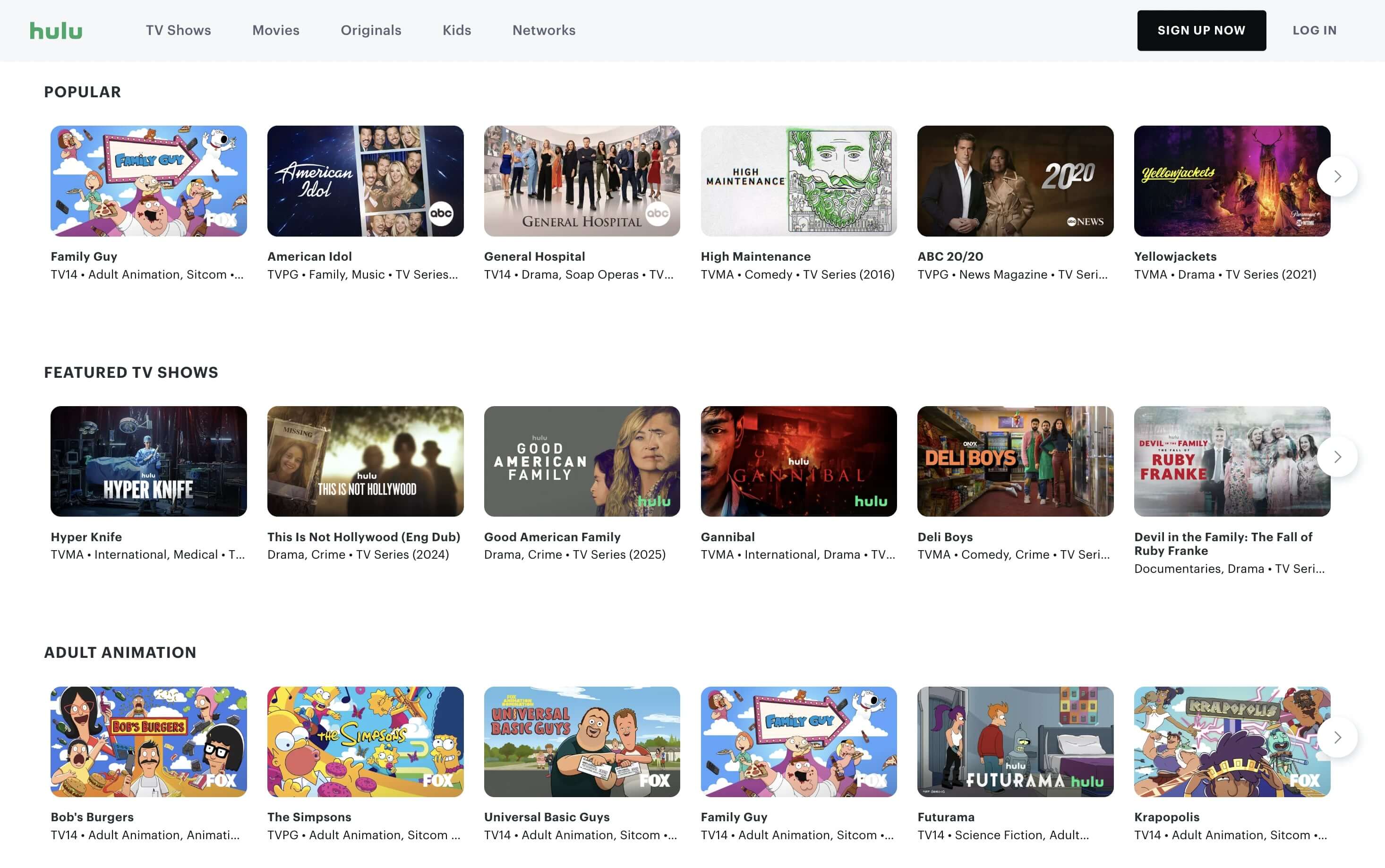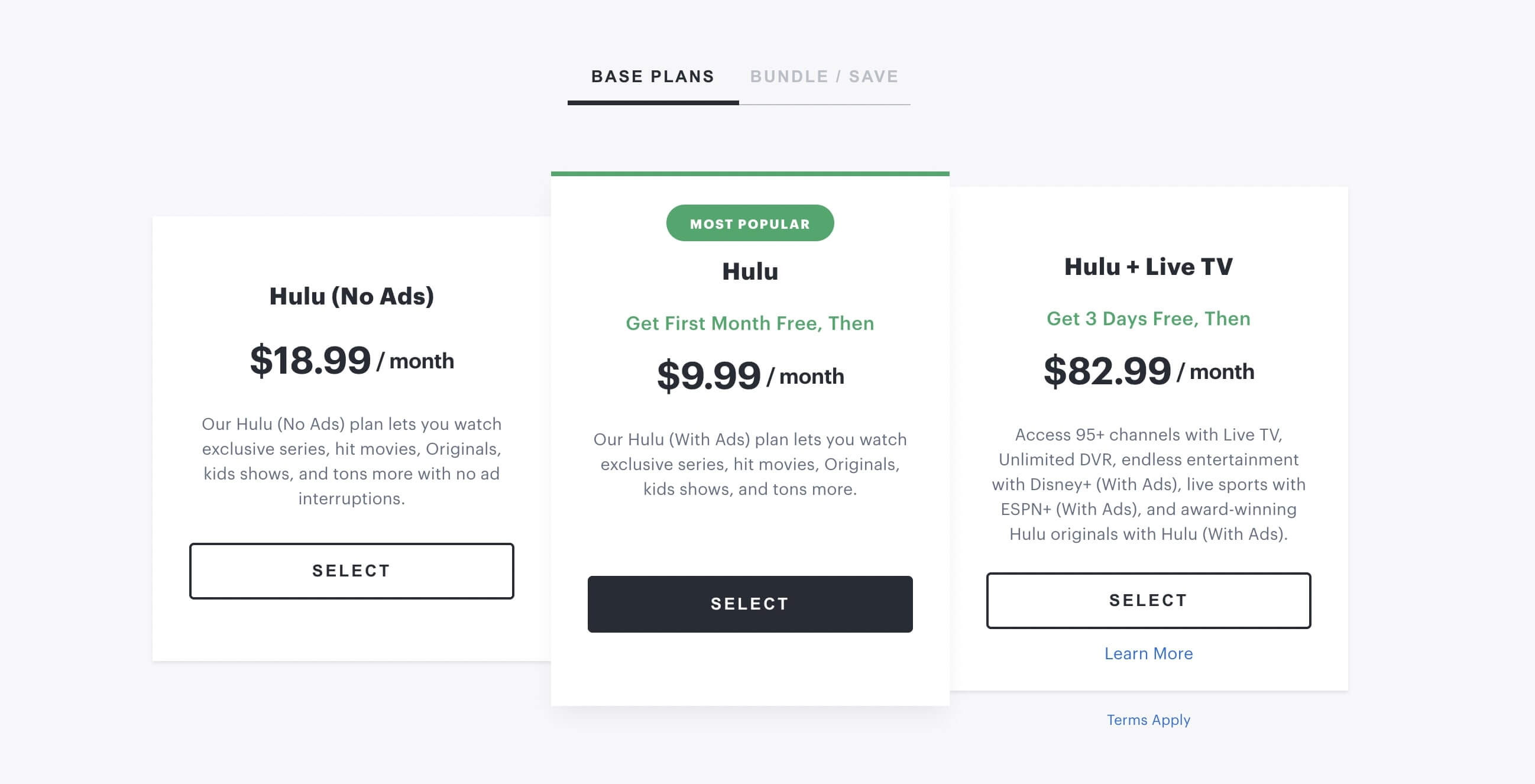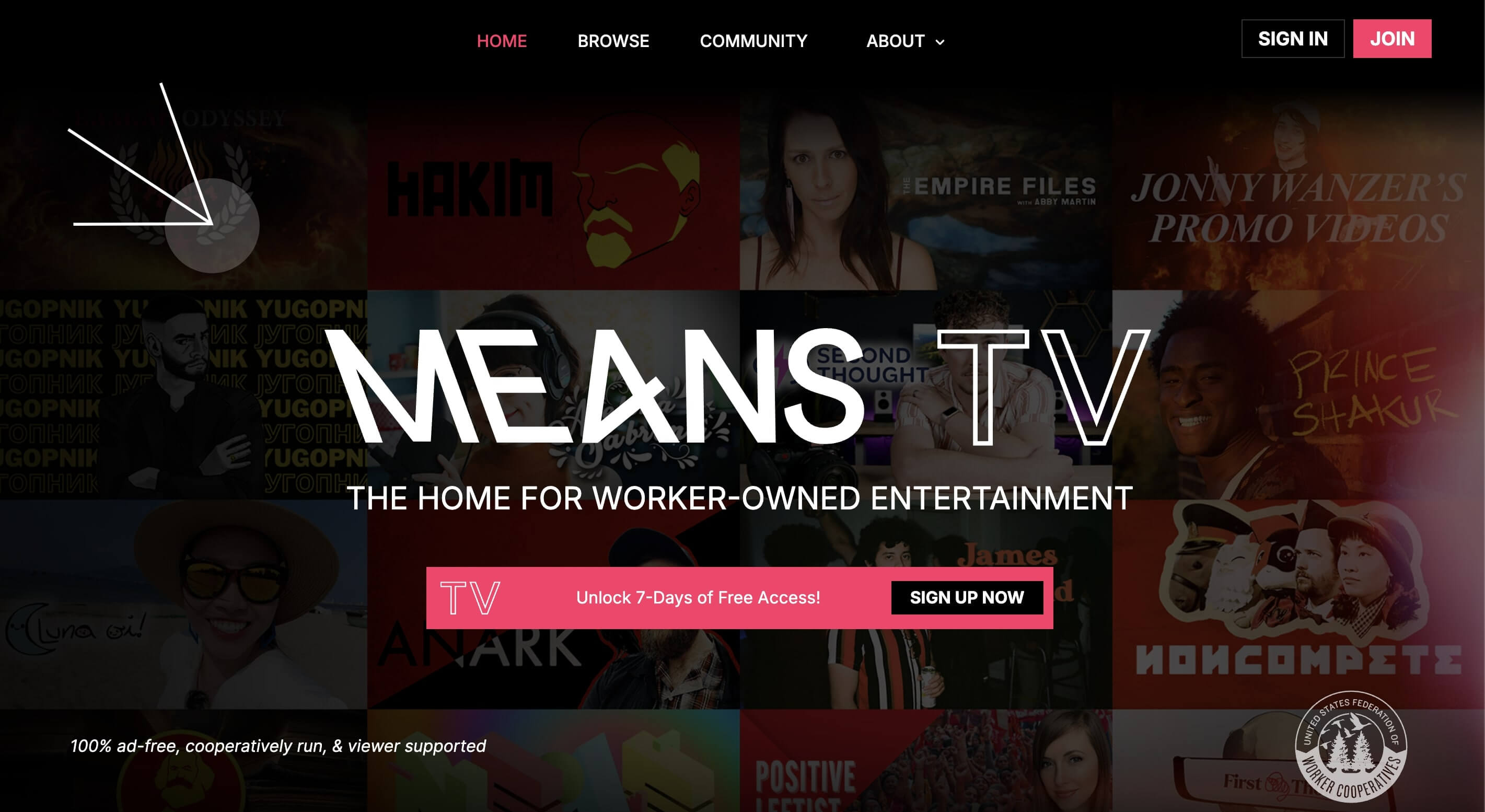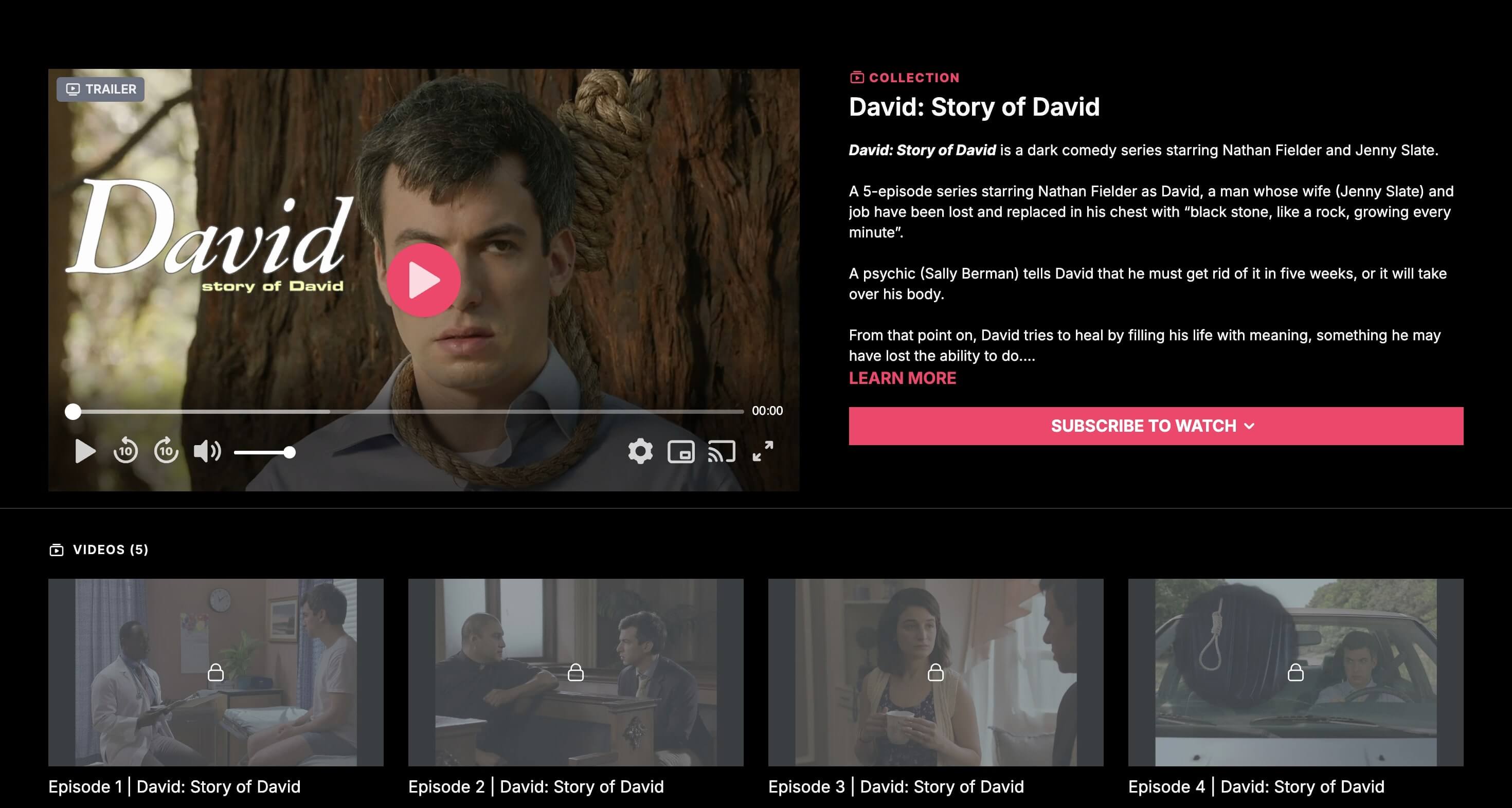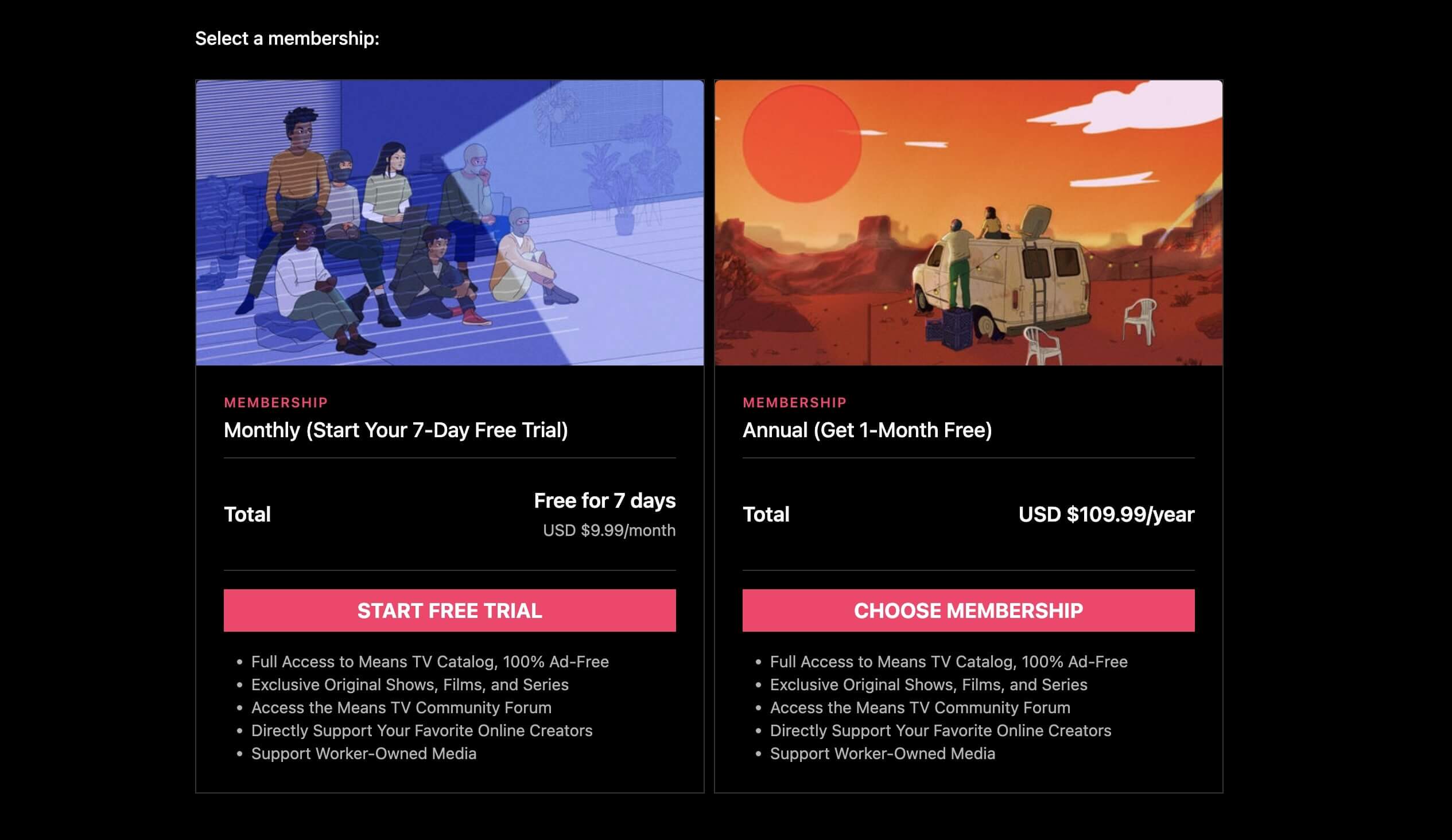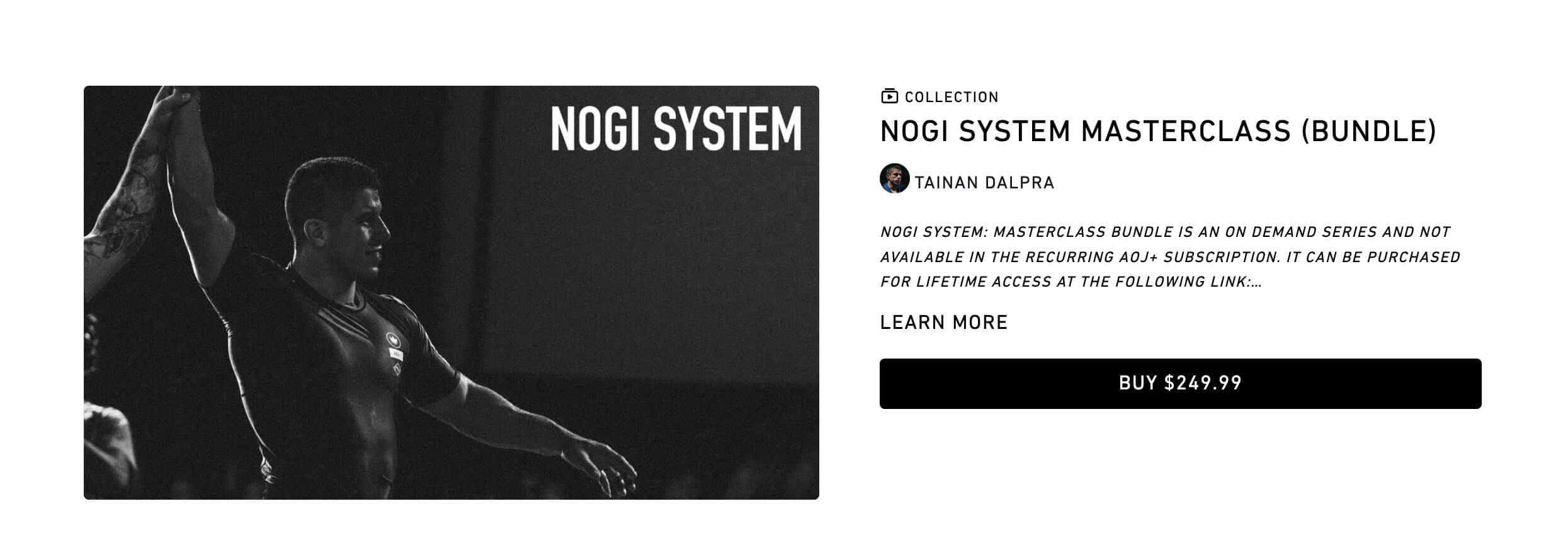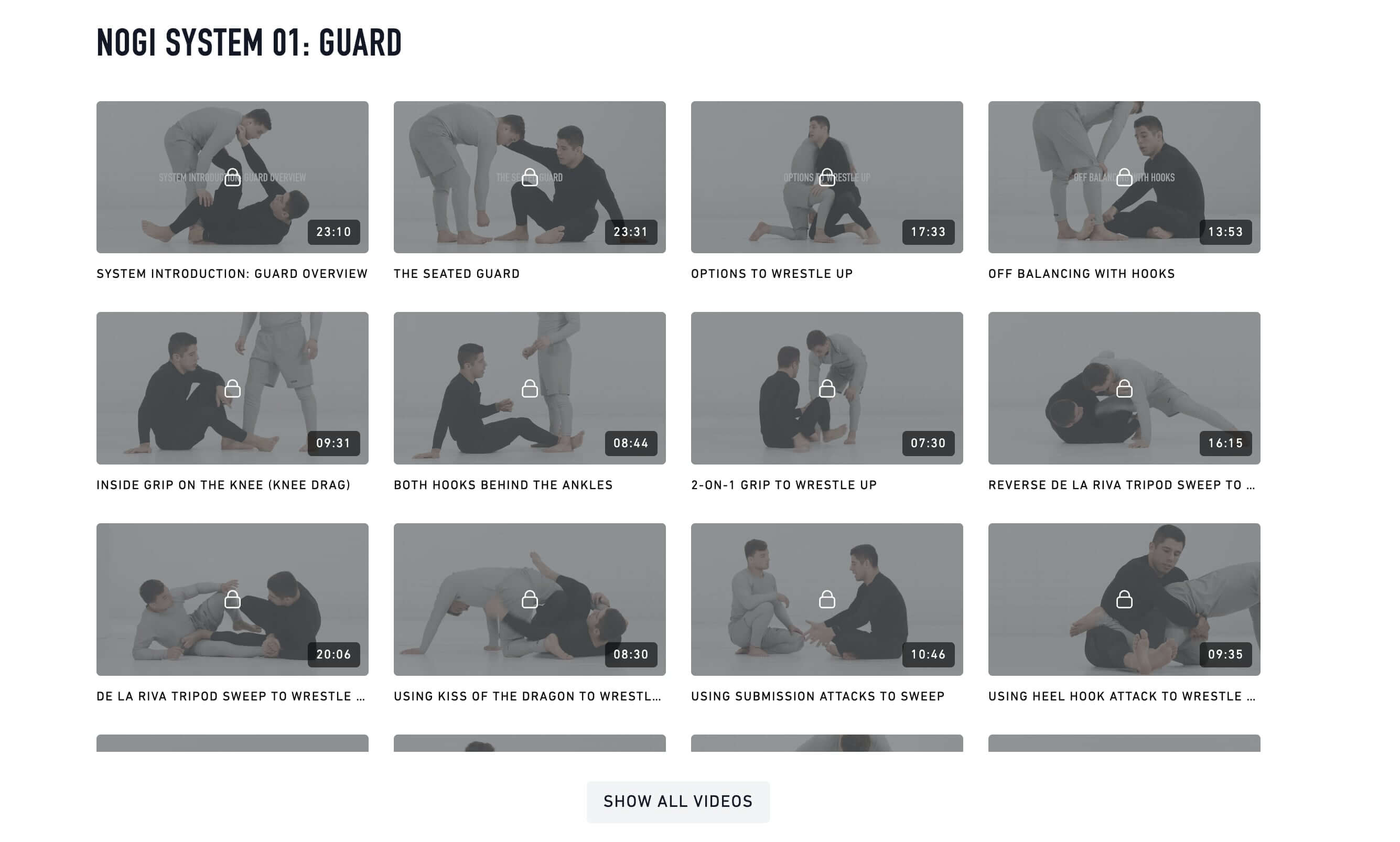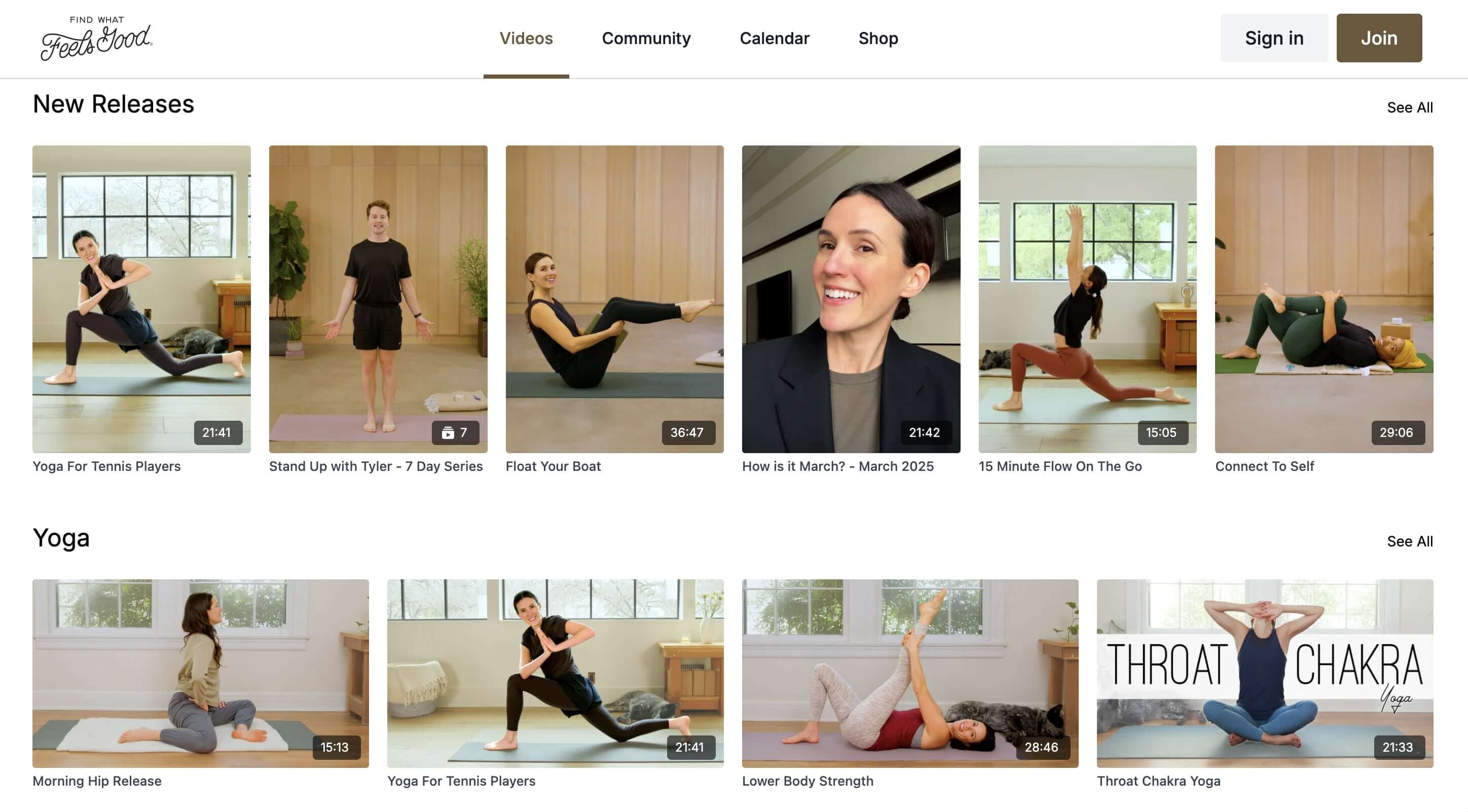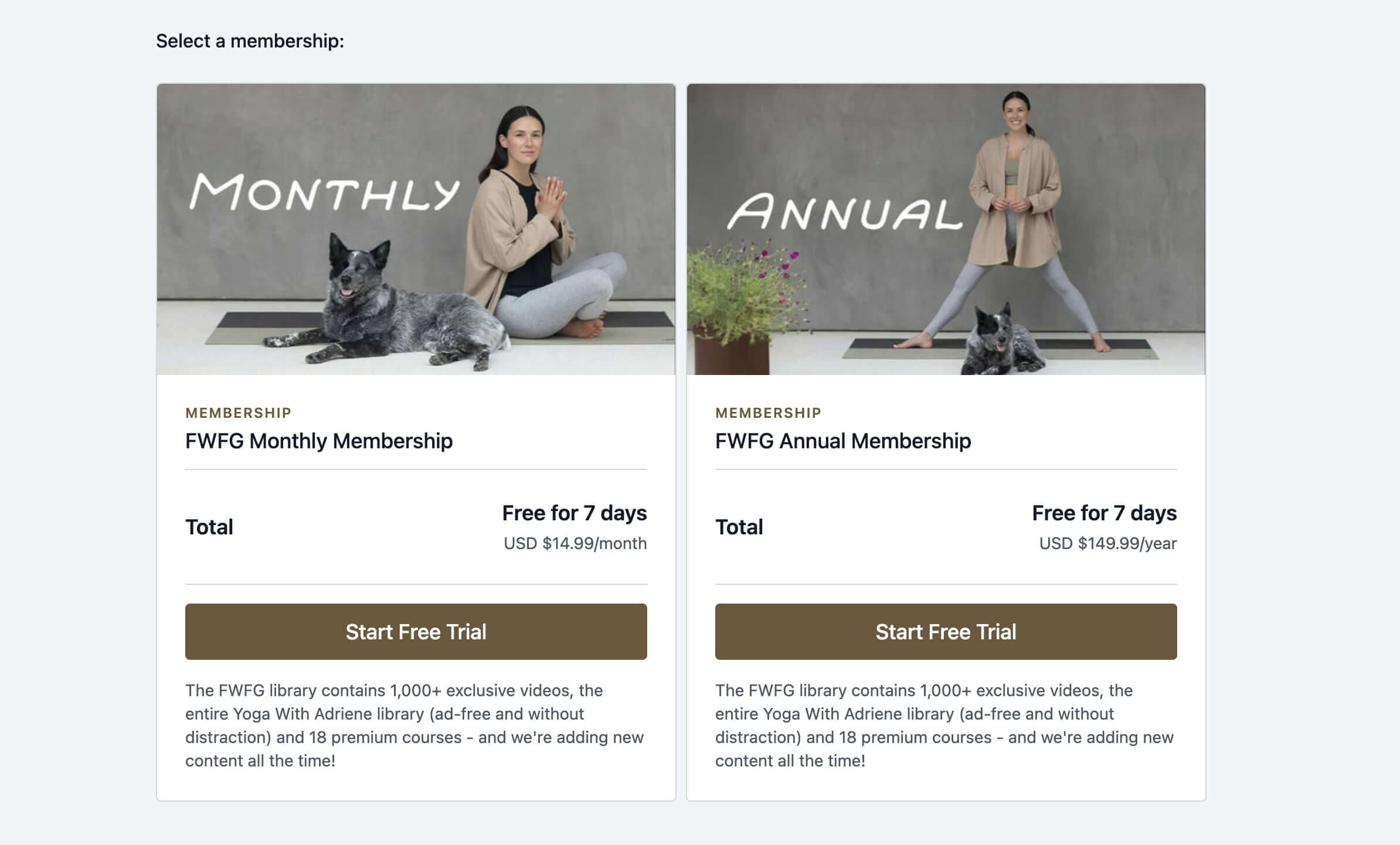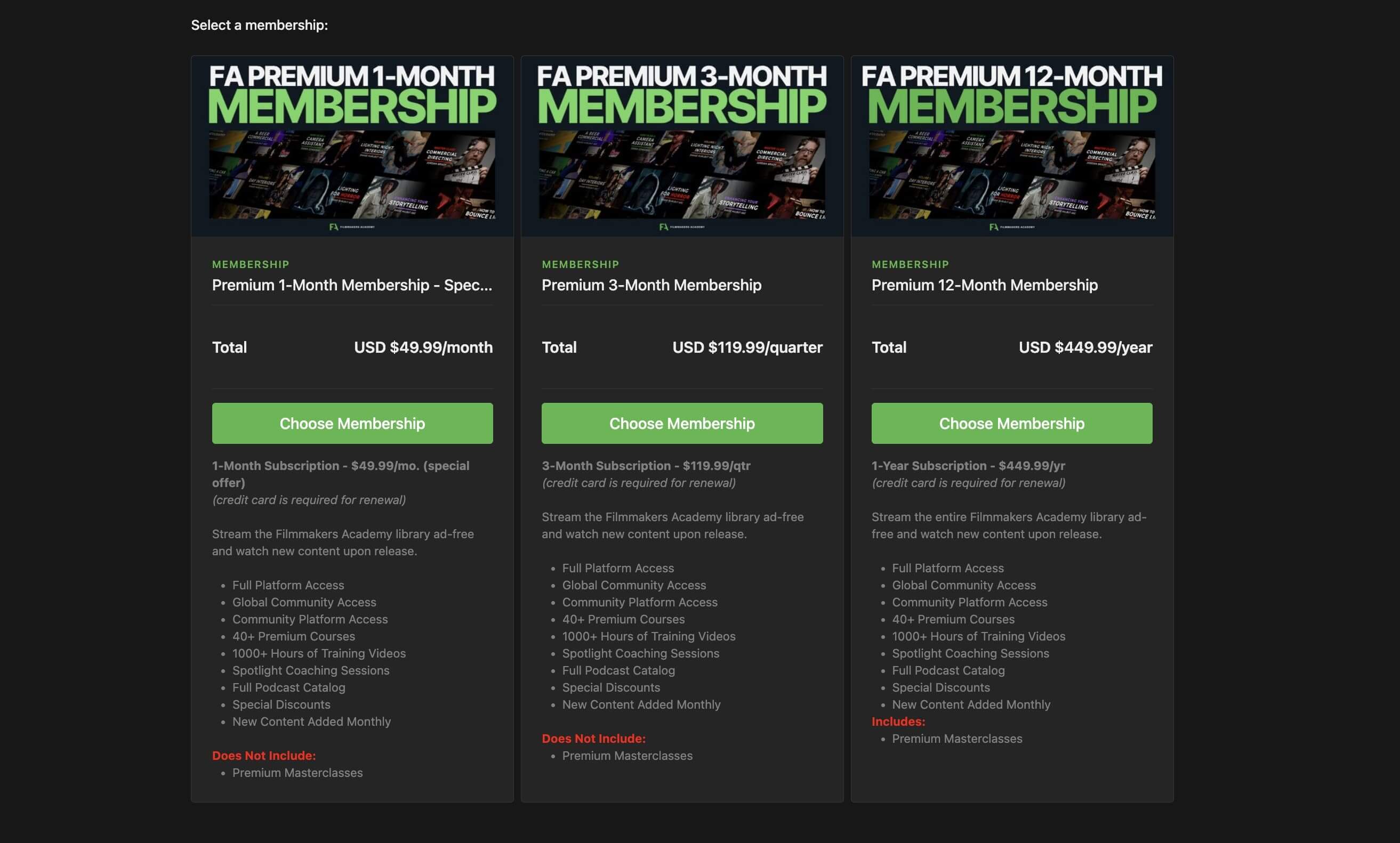Pricing your OTT platform is no small task.
Some platforms thrive on subscriptions, while others do better with one-off purchases or ad-supported content. And with so many options – and no clear roadmap – it’s easy to feel stuck. Maybe you’ve already launched and aren’t seeing the revenue you expected. Or maybe you’re still figuring out what to charge, how to package it, or whether people will even pay.
I’ve spent years analyzing successful content-based businesses – learning what works and what doesn’t and using that to create resources (like this one!) to help others get unstuck.
This guide pulls together all the insights you need to build a pricing approach that actually works for your content, your audience, and your business goals. You’ll learn how to:
- Choose a pricing strategy that aligns with your goals
- Pick the OTT monetization model that fits your content and audience
- Build a pricing structure that’s simple, scalable, and designed to convert
By the end, you’ll have a clear roadmap for pricing your OTT service in a way that feels good for your audience – and great for your business.
Understanding the layers of OTT pricing: strategy, model, and structure
Before diving into this OTT pricing guide, it’s important to understand that pricing operates on 3 distinct levels: strategy, model, and structure.
These layers work together to define how you charge, why you charge that way, and how it’s presented to your audience. When they’re clear and aligned, your pricing feels simple, fair, and easy to sell.
Put simply:
| What you’re deciding | What that really means | Why it matters |
|---|---|---|
| Pricing Strategy (the why) | What your pricing is designed to do – grow your audience, build loyalty, or earn more per sale | Helps you set pricing that matches your business goals |
| Pricing Model (the what) | How people get access to your content (e.g. subscribe, pay once, watch with ads) | Decides how you earn money from your videos |
| Pricing Structure (the how) | How the pricing is packaged – like a monthly fee, a one-time purchase, or a free plan with upgrades | Makes it easy for people to understand what they’re paying for |
This guide will take you through each of these 3 pricing aspects to help you successfully find the perfect pricing approach for your OTT business.
Let’s get started!
Perfect your OTT pricing: how to find the right strategy, model, and structure
First, find the right OTT pricing strategy
Before you choose a model or structure, you need to clarify your overall OTT pricing strategy – this influences how you attract users, how you compete, and how you grow revenue over time.
Your pricing strategy can change as your OTT platform grows, so don’t worry about feeling ‘locked in’ to the first strategy you choose. The key is to simply pick a strategy that fits your current goals and stage of growth, and to test, learn, and iterate over time.
Here’s a quick cheat sheet to guide you at this decision-making stage:
| If this sounds like you… | Try this strategy |
|---|---|
| “I’m just getting started and need users fast” | Penetration pricing |
| “My content is highly valuable to a niche group” | Value-based pricing |
| “I want to build trust with free content first” | Freemium or lead-gen |
| “I’m unsure where to start and need benchmarks” | Competitive pricing |
Here’s a quick look at the 4 pricing strategies that work best for OTT streaming services…
1. Penetration pricing
This strategy involves starting with a lower price to attract more users quickly, with plans to increase pricing later as value grows. It’s often used by new platforms looking to build a user base or test pricing sensitivity. This strategy does introduce the risk of pricing your premium services too low to be sustainable, so exercise some caution when considering this strategy.
Best for: early-stage platforms, broad or general content categories
Why it works: low prices reduce friction and help validate demand quickly
2. Value-based pricing
This strategy focuses on what your audience believes your video content is worth. Pricing is based on the perceived value you deliver – such as exclusive access, premium production, expert instruction, or community support – rather than just your costs or competitor benchmarks.
Best for: niche platforms, premium educational content, creator-led brands
Why it works: loyal users are often willing to pay more for highly relevant or transformative content
3. Freemium or lead-generation pricing
With this strategy, you offer some video content for free, then convert engaged users into paying members through upgrades, premium tiers, or exclusive benefits.
Best for: platforms with a mix of evergreen and premium content
Why it works: free content builds trust and reach, while premium content drives monetization
4. Competitive pricing
This approach sets your prices based on what other similar platforms are charging. It’s useful for businesses operating in a saturated niche or for creators unsure how to price their content initially.
Best for: highly competitive markets or platforms offering comparable value
Why it works: it helps position your offer clearly within the pricing norms of your category
Next, pick the right OTT pricing model
Once you’ve defined your pricing strategy, the next step is choosing your OTT pricing model – the monetization format that defines how users access your content and how your platform generates revenue.
There are 5 OTT pricing models to choose from. The right model will align with your business goals, content strategy, audience willingness to pay, competition, and scalability.
Here’s a quick overview of each OTT revenue model and how they match up to certain criteria:
| OTT Pricing Model | Business Goals | Content Strategy | Target Audience Willingness to Pay | Scalability |
|---|---|---|---|---|
| AVOD | Maximize reach and brand visibility | High-volume, evergreen, or episodic content | Low willingness to pay | High, but depends on ad performance |
| SVOD | Build predictable, recurring revenue | Ongoing value: new content or content bundles | Moderate to high | High, requires regular content output |
| TVOD | Generate one-time revenue from high-value content | Time-sensitive, premium, or event-based | Willing to pay for specific access | Moderate, event-driven |
| Membership | Foster loyalty and long-term engagement | Community-driven, educational, high-value | High for loyal niche audiences | High, retention-focused |
| Hybrid | Diversify revenue and serve varied segments | Mixed formats: live, on-demand, exclusive, etc. | Varies across segments | High, but requires careful coordination |
1. Ad-Supported Video on Demand (AVOD)
How it works: Viewers get free access to content and watch video ads (e.g., pre-roll ads, mid-roll ads) that generate advertising revenue for your platform.
Ideal pricing structure: Free content with pre-roll/mid-roll ads; optional freemium tier for ad-free viewing.
Best for:
- Business goals: Platforms focused on maximizing reach, brand awareness, and audience size
- Content strategy: High-volume, evergreen, or episodic content that performs well with frequent views
- Audience willingness to pay: Low willingness to pay; price-sensitive or casual viewers
- Scalability: High, but dependent on ad performance and significant viewer traffic
- Competitive fit: Works well when competing with free alternatives or large open platforms like YouTube
| Pros: | Cons: |
|---|---|
| Attracts large audiences with a lower barrier to entry for viewers. Generates passive income through ad space and impressions. | Requires high viewership to be profitable. OTT advertising will require some manual management to control for user experience. Ad fatigue can affect user engagement. |
AVOD example:
Hulu, an entertainment service that uses the AVOD model.
Hulu is one of the most well-known OTT services using the AVOD revenue model, offering access to a large library of TV shows, movies, and original content at a lower cost in exchange for ads. Viewers can choose an ad-supported plan or upgrade to an ad-free experience. This dual-tiered approach can be a win-win, with both subscription and advertising revenue generated at once.
2. Subscription Video on Demand (SVOD)
How it works: Users pay a recurring fee (monthly or annually) for unlimited access to your content.
Ideal pricing structure: Flat-rate monthly or annual plans; optional tiered access for different features or audience types.
Best for:
- Business goals: Generating predictable, recurring revenue and building long-term subscriber relationships
- Content strategy: Ongoing content creation – such as series, lessons, or regularly updated libraries
- Audience willingness to pay: Moderate to high willingness to pay, especially for ongoing value
- Scalability: High, especially for businesses with steady content output and retention strategy
- Competitive fit: Effective when offering premium or niche content not easily found on free platforms
| Pros: | Cons: |
|---|---|
| Recurring revenue results in more predictable income Works well with content bundles and large libraries | Requires regular content updates Higher competition in mainstream streaming Churn can affect growth if not managed |
SVOD example:
MeansTV, an entertainment & media service that uses the SVOD model.
MeansTV is a worker-owned OTT streaming platform offering a wide range of socially conscious films, documentaries, and original series. As a subscription-only service, it charges flat monthly or annual subscription fees for unlimited access to its ad-free content. This SVOD model allows MeansTV to build predictable revenue while offering consistent value to a mission-driven audience. It’s a strong example of using a subscription model to support niche, high-impact storytelling.
3. Transactional Video on Demand (TVOD)
How it works: Users pay for individual pieces of content, like a movie rental or one-time event access (also called pay-per-view).
Ideal pricing structure: One-time rentals, purchases, or bundles for special releases.
Best for:
- Business goals: Earning one-time, high-margin payments from premium or exclusive content
- Content strategy: Time-sensitive, high-value content such as OTT live streams, workshops, or premieres
- Audience willingness to pay: High willingness to pay for specific topics or events
- Scalability: Moderate; works best with high-ticket items or regular promotional efforts
- Competitive fit: Best when offering exclusive or limited-access content that justifies a one-time fee
| Pros: | Cons: |
|---|---|
| High revenue per transaction Works well for limited or premium content No need for ongoing updates or large libraries | No recurring revenue Higher marketing costs to drive each sale Less retention and long-term engagement |
TVOD example:
Art of Jiu Jitsu, a martial arts education service that uses the TVOD model.
Art of Jiu Jitsu (AOJ+) offers an on-demand collection of premium seminars, matches, and training content available exclusively through one-time purchases. Users can buy individual videos for lifetime access, which is ideal for fans and athletes looking to focus on specific events or topics.
4. Membership Model
How it works: Users pay for access to premium content plus added value like community features, coaching, or member-only perks. It often overlaps with SVOD but with deeper engagement and relationship-building.
Ideal pricing structure: Flat-rate or tiered memberships, bundles of content, live access, and community tools.
Best for:
- Business goals: Creating long-term engagement, reducing churn, and building community loyalty
- Content strategy: Relationship-based content like coaching, courses, and interactive sessions
- Audience willingness to pay: High – particularly in niche or lifestyle-focused communities
- Scalability: High with engaged members, but requires consistent effort to maintain value and connection
- Competitive fit: Strong when offering a unique creator experience or community not available elsewhere
| Pros: | Cons: |
|---|---|
| Higher perceived value = higher pricing potential Reduces churn through emotional investment Encourages upsells, referrals, and loyal superfans | Requires effort to build and manage a community May limit audience size due to premium pricing |
Membership example:
Find What Feels Good, a yoga and wellness service that uses the Membership model.
Find What Feels Good (FWFG) is a premium yoga platform using the Membership model to monetize content – alongside private community access. Members pay a monthly or annual fee to access exclusive yoga classes, curated programs, and a supportive online community on FWFG’s OTT apps. This membership model fosters deep engagement, consistent revenue, and a strong sense of connection between creator and audience.
Build, launch and manage your membership, all in one place.
5. Hybrid Models
How it works: The Hybrid OTT pricing model combines 2 or more models (e.g., free AVOD content plus a paid SVOD upgrade or subscriptions plus pay-per-view events).
Ideal pricing structure: Mix of freemium, subscription, and transactional access; upsells and content gating by tier.
Best for:
- Business goals: Balancing reach, revenue, and flexibility by offering multiple access points
- Content strategy: Mixed – including subscriptions, one-time purchases, live events, or free previews
- Audience willingness to pay: Varies – appeals to both casual browsers and committed superfans
- Scalability: High, but requires clarity in messaging and a well-structured content ecosystem
- Competitive fit: Great for dynamic platforms serving a broad or evolving user base
| Pros: | Cons: |
|---|---|
| Multiple revenue streams help maximize revenue Appeals to more audience types Easier to layer new offers over time | More complex to manage Requires clear communication to avoid confusion |
Hybrid example:
Filmmakers Academy, a filmmaking education service that uses the Hybrid model.
Filmmakers Academy uses the Hybrid model, blending subscription-based access (Membership) with one-off purchases (TVOD). Members can subscribe to unlock the full on-demand content library – from beginner training to advanced cinematography techniques – or choose to purchase individual courses without committing to a subscription. This hybrid approach caters to both long-term learners and those looking for specific skills or topics. With OTT delivery across multiple devices, Filmmakers Academy gives professionals the flexibility to learn anywhere, anytime.
Want to see what other OTT streaming services are doing? Explore some of the top OTT examples!
OTT Examples: 12 High-Converting Branded Streaming Apps from Top Creators
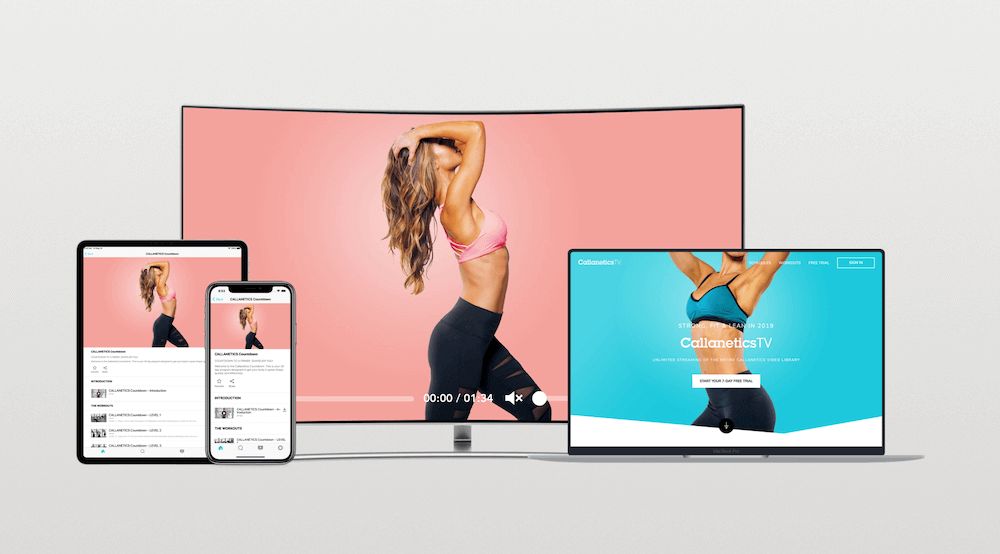
Lastly, work out the best OTT pricing structure
Once you’ve chosen your pricing model, the next step is figuring out how to charge and how much to charge. This is your pricing structure – the framework that turns your pricing strategy and model into a real-world offer your audience can understand and act on.
A pricing structure defines:
- How much your content costs
- How that cost is packaged (e.g. subscription, one-time fee, pay-per-view)
- How often users are billed (if at all)
To get this right, you’ll need to strike a balance between your content’s value, your business goals, and what your target audience is willing to pay.
Let’s walk through the 5 key steps to build your pricing structure:
Step 1: Clarify what you’re selling – and how people access it
Before you can price your offer, define the value your audience will receive and how they will experience it. Aim to answer the following guiding questions:
- Is your content evergreen, episodic, or event-based?
- Will users access everything with one payment or unlock content gradually?
- Is the experience passive viewing, or does it include community, coaching, or interactivity?
This will help determine the type of structure that makes the most sense, such as a monthly subscription, one-time payment, or tiered membership.
Step 2: Choose a structure that matches your model
Your monetization model will strongly influence the structure that works best. Here’s how the most common OTT pricing structures typically align with the OTT pricing models we discussed earlier:
| OTT Pricing Structure | How It Works | Best For | Pairs With |
|---|---|---|---|
| Flat-rate | Users pay a fixed price for full access | Simple subscriptions, loyal audiences | SVOD, Membership |
| Tiered Pricing | Different price levels for different perks | Segmented audiences, upsells | SVOD, Membership, Hybrid |
| Donation-based | Voluntary contribution from users | Creator-led brands, loyal fans | Membership, Hybrid |
| Bundles | Curated packages at a fixed price | Thematic content, short-term promos | TVOD, SVOD |
| Pay-per-view (PPV) | Users pay once per content item | Exclusive content, live events | TVOD, Hybrid |
| One-time Fee | Lifetime access for a single payment | Courses, one-off products | TVOD |
| Freemium | Free base access, pay to upgrade | Broad, price-sensitive audiences | AVOD, Hybrid |
Step 3: Determine your pricing amount
This is where many businesses get stuck, since – for example – pricing a subscription service is different to pricing an online course. Instead of guessing, use this 3-part framework to help price your service in a way that feels fair and profitable for your OTT streaming services, regardless of the model you’re pricing for.
1. Value-based pricing
Consider what your audience is really paying for:
- A learning outcome?
- A transformation?
- Access to exclusivity or convenience?
If you’re offering high-impact educational or niche content, you may be able to charge more than general entertainment platforms. Whatever you do, don’t shy away from charging ‘too much’ if it’s an accurate reflection of the value you’re offering.
Lower price offers are always going to have higher rates of churn… When you pay more for something, you assign more value to it and are therefore more likely to make use of it.
2. Competitor and market benchmarking
Look at similar OTT platforms:
- What are they charging?
- What’s included at each price point?
- How does your offer compare in terms of value, quality, and community?
This gives you a starting point – not to copy, but to anchor your expectations.
There’s more to value than just undercutting competitors on price. It’s about striking that perfect balance between being affordable and delivering unbeatable value. That’s the sweet spot.
Chris Sharpe, COO at Find What Feels Good
3. Audience feedback
Don’t be afraid to ask. Use:
- Surveys (e.g. via Typeform or email) to gauge willingness to pay
- Waitlist signups at multiple price points
- Beta offers or pre-launch bundles to validate demand
Use our free tool to pinpoint your ideal membership price in just 3 steps, leveraging a decade of data.
Step 4: Choose your access format and billing logic
Now that you’ve chosen a structure and price point, define how users will pay and what they’ll receive. This step depends on both your content and your goals.
Options include:
- Flat-rate monthly or annual subscription (best for ongoing content access)
- Tiered subscriptions with different features or content levels
- Pay-per-view for one-time events, exclusive films, or premium content drops
- One-time fee for lifetime access (great for courses or packaged content)
- Freemium with upsells (free content to build trust, paid content to convert)
- Bundles (e.g. 3-month pass, all-access bundle, or topic-specific package)
If your model is non-subscription based (like TVOD or event access), focus less on billing cycle and more on clarity of value – why this content is worth a one-time payment.
Step 5: Review and adjust regularly
As your content library grows, your audience matures, and your brand evolves – so should your pricing.
Schedule a review every few months and ask:
- Are we charging enough for the value we deliver?
- Are users confused by our pricing options?
- Is there an opportunity to simplify, add tiers, or increase pricing?
Just make sure changes are clearly communicated, with advance notice for existing subscribers.
You should raise your prices at least every 2 years and consider offering annual plans as they’re important for offering high-value and generating a stable business. Our data shows that for annual plans, churn rates are relatively lower, and customer lifetime value (LTV) is significantly higher than monthly plans.
Conclusion
Choosing the right OTT pricing approach isn’t about copying what big streaming services do – it’s about finding the right fit for your audience preferences, your content, and your goals.
By working through these 3 steps – defining your strategy, selecting the right pricing model, and building a clear structure – you can create a monetization plan that’s sustainable, scalable, and aligned with the experience you want to deliver.
Whether you’re just getting started or ready to optimize, remember: pricing isn’t static. It’s a tool you can refine over time as your platform grows, your content evolves, and your audience becomes more engaged.
Build, launch and manage your membership, all in one place.

